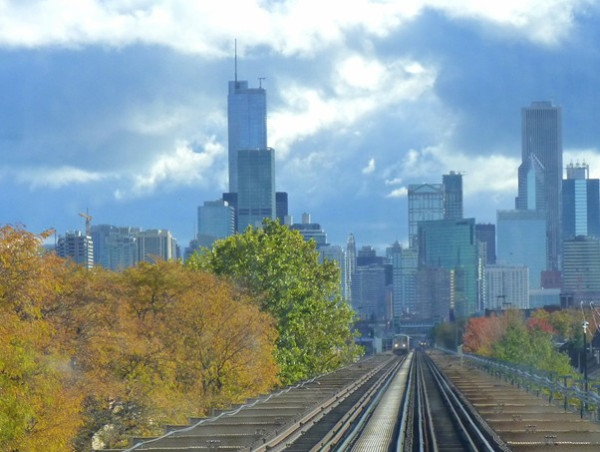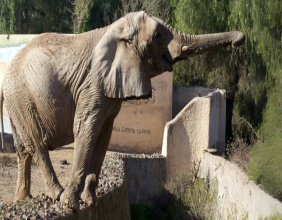Researchers identify tree species with high carbon sequestration potential and low air pollutant emissions for smarter afforestation strategies
CHINA, July 3, 2025 /EINPresswire.com/ -- Trees help clean the air in cities but they also contribute to smog formation. A recent study conducted at Beijing Forestry University analyzed six major urban tree species for carbon storage and biogenic volatile organic compound (BVOC) emissions using field surveys and satellite data. The findings revealed two tree species: Robinia pseudoacacia and Betula platyphylla, as the ideal for maximizing carbon capture while minimizing harmful emissions—guiding smarter urban forest planning in China.
With the world struggling against rising carbon emissions, cities are racing to reduce their carbon footprints and improve air quality with urban forests as their critical allies. But while these green giants absorb carbon dioxide, they release natural emissions which contribute to pollution. These natural emissions are called biogenic volatile organic compounds (BVOCs), which contribute to smog and ground-level-ozone formation. The challenge is to find the right trees that deliver maximum environmental benefit with minimal side effects.
In this vein, a team of researchers led by Professor Xiaoxiu Lun and Professor Qiang Wang from Beijing Forestry University, China, used a data-driven approach to filter out the ideal tree species for urban forests. By combining field surveys with satellite remote sensing data, the researchers mapped the carbon stock and BVOCs emissions of six dominant urban tree species in Beijing, China. Their findings were made available online on June 22, 2024, and were published on October 01, 2025 in Volume 156 of Journal of Environmental Sciences.
“Urban trees can act as both sinks and sources for environmental pollution,” explains Dr. Lun. “The strategy lies in identifying which trees are more suitable for carbon absorption and reduced BVOC emissions.”
To ensure optimal results, the team used a hybrid methodology that included data derived from ground-based biomass measurements and remote sensing data from two satellite imaging systems—Landsat-8 and Sentinel-2. These data were analyzed using machine learning tools to build a detailed biomass estimation model for each species. These models were then used to calculate above-ground carbon stock and to simulate BVOCs emissions using the globally accepted G95 model, which accounts for temperature, sunlight, and tree physiology.
A total of six species were evaluated including Robinia pseudoacacia, Quercus Linn, Populus tomentosa, Pinus tabulaeformis, Betula platyphylla and Larix gmelinii. Based on the models, the total carbon stock of these species across Beijing’s urban and mountain forests was estimated at 5.638 million tons in 2021, with an average carbon density of 58.86 t/ha. Among them, Robinia pseudoacacia and Populus tomentosa showed the highest carbon densities exceeding 100 t/ha.
However, carbon storage is only half the equation. Plants also emit BVOCs—specifically isoprene, monoterpenes, and other volatile organic compounds. These compounds react with urban air pollutants to form ground-level ozone and secondary organic aerosols affecting air quality. The researchers found that the total BVOCs emissions reached 25,789.72 tons in 2021, with Populus tomentosa and Robinia pseudoacacia being the highest emitters per unit area.
By comparing both carbon density and BVOC emissions per unit area, the researchers identified two optimal species for urban afforestation: Betula platyphylla (white birch), best suited for high-altitude areas, and Robinia pseudoacacia (black locust), ideal for urban plains and low altitudes.
“These species provide the best trade-off—high carbon uptake with low BVOCs emissions,” notes Prof. Wang. “This dual benefit is a key to achieving both pollution control and carbon mitigation in urban ecosystems.”
Interestingly, the study also identified that broad-leaved species like Robinia, Quercus and Populus tend to store more carbon in comparison to conifers. However, not all broadleaves were comparable in BVOC emissions. According to the model, the emission rankings placed Populus tomentosa at the top, which was followed by Robinia pseudoacacia, with Betula platyphylla emitting the least amount of BVOCs.
In conclusion, the study underscores the importance of tree selection in urban afforestation efforts. Looking ahead, the researchers propose that their integrated modeling approach—combining biomass models with satellite data—can be applied in other cities to support afforestation strategies aligned with local climate goals and air quality standards.
***
Reference
Titles of original paper: Assessing carbon stock and BVOCs emissions from dominant tree species in Beijing
Journal: Journal of Environmental Sciences
DOI: 10.1016/j.jes.2024.06.020
About the Beijing Forestry University, China
Beijing Forestry University (BFU), founded in 1952 and located in Haidian District, Beijing, is a prominent public institution under the administration of China’s Ministry of Education. As a part of the prestigious Project 211 and the Double First-Class initiative, BFU is recognized for its excellence in forestry, ecological preservation, and environmental engineering. The university comprises 14 schools that provide diverse undergraduate and postgraduate programs in areas such as forestry, environmental science, landscape architecture, biotechnology, engineering, economics, and the humanities.
Website: www.bjfu.edu.cn.
About Professor Xiaoxiu Lun from Beijing Forestry University
Dr. Xiaoxiu Lun is an academic researcher from the College of Environmental Engineering, Beijing Forestry University, China. She has contributed to research in diverse topics including ecological carbon sink technology, ecological restoration, and inventory of VOCs emissions from plant sources. Dr. Lun has an h index of 10, and has co-authored 22 publications. She also serves as a member of the Ozone Pollution Control Professional Committee of the Chinese Society of Environmental Sciences, and a standing member of the Specialized Committee on Ecological Rehabilitation of China Society of Soil and Water Conservation.
About Professor Qiang Wang from Beijing Forestry University
Dr. Wang serves as the vice president of Beijing Forestry University, China. His expertise lies in the areas of air quality control, heterogeneous catalysis and materials chemistry, especially focusing on energy and environmental issues, including carbon dioxide capture and utilization, vehicle emission control, and environmental effects of plants. Prof. Wang has been honored with numerous awards, and serve as editorial board member of various reputed journals.
Dr. Yue Liu
Journal of Environmental Sciences
+86 10-62920553
[email protected]
Legal Disclaimer:
EIN Presswire provides this news content "as is" without warranty of any kind. We do not accept any responsibility or liability for the accuracy, content, images, videos, licenses, completeness, legality, or reliability of the information contained in this article. If you have any complaints or copyright issues related to this article, kindly contact the author above.
![]()




